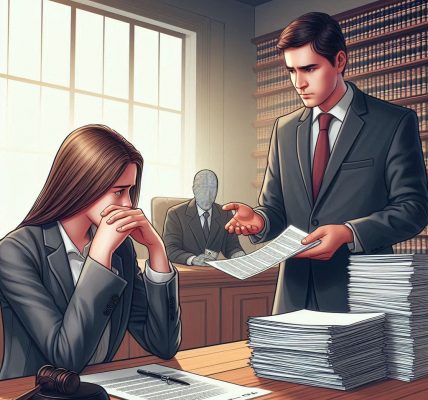Introduction
Accidents can happen anywhere, including public places such as parks, sidewalks, government buildings, and public transportation stations. If you are injured on public property, you may be entitled to compensation. However, filing a claim against a government entity is more complicated than a standard personal injury claim. Special rules, shorter deadlines, and legal protections for public entities can make the process challenging.
In this guide, we will discuss the steps to take after an injury on public property, the legal framework governing such cases, and how to maximize your chances of receiving fair compensation while avoiding legal complications.
Understanding Public Property Liability
Public property is owned and maintained by the local, state, or federal government. Unlike private property owners, government entities have sovereign immunity, which limits lawsuits against them. However, under the Tort Claims Acts, most government agencies allow personal injury claims if negligence can be proven.
Common public places where injuries occur include:
- Public parks and playgrounds
- Sidewalks and roads
- Government office buildings
- Public schools and universities
- Public transportation (buses, subways, trains)
To succeed in a claim, you must prove that the government’s negligence caused your injury and that they failed to reasonably maintain the public space.
Steps to Take After an Injury on Public Property
If you are injured on public property, taking immediate action is crucial for protecting your health and legal rights. Follow these steps:
1. Seek Medical Attention Immediately
- Your health should be the top priority. Get medical help, even if the injury seems minor.
- Medical records serve as evidence linking the injury to the accident.
- Delayed medical treatment can weaken your claim.
2. Report the Incident
- Notify the relevant government agency about the injury.
- If the injury happened in a park, government building, or sidewalk, contact the city or state department responsible for maintenance.
- If the injury occurred on public transportation, report it to the transit authority.
- Obtain a copy of the incident report for your records.
3. Gather Evidence
- Take photos and videos of the accident scene, including hazards (cracked sidewalks, broken stairs, poor lighting, etc.).
- Collect contact information of any witnesses.
- Keep a journal detailing pain levels, medical treatments, and any difficulties caused by the injury.
4. Identify the Responsible Government Entity
- Different agencies manage different public spaces. Identifying the right government entity is critical for filing a claim.
- Example: If you are injured on a city-owned sidewalk, the municipal government is responsible.
5. Understand Government Immunity and Filing Deadlines
- Government entities have sovereign immunity, but most allow injury claims under the Tort Claims Act.
- Strict deadlines apply. Many states require claims to be filed within 30 to 180 days after the accident.
- Failing to meet deadlines can result in claim denial.
6. File a Notice of Claim
- Before filing a lawsuit, most jurisdictions require a Notice of Claim to be submitted to the responsible government agency.
- The notice must include:
- Your name and contact information
- Date, time, and location of the accident
- Description of the injury
- Amount of compensation sought
- Supporting evidence (photos, medical reports, witness statements)
- If the claim is denied or ignored, you may proceed with a lawsuit.
7. Consult a Personal Injury Attorney
- Suing a government entity is more complex than suing a private party.
- A personal injury lawyer can:
- Ensure all deadlines are met
- Gather strong evidence
- Negotiate a fair settlement
- Represent you in court if needed
Proving Negligence in Public Property Injury Cases
To win a claim, you must prove that the government was negligent in maintaining the public property. The key elements of negligence include:
1. Duty of Care
- The government has a duty to maintain public spaces in a reasonably safe condition.
- Example: The city is responsible for repairing hazardous sidewalks.
2. Breach of Duty
- The plaintiff must show that the government failed to maintain safe conditions.
- Example: A pothole left unrepaired for months led to an accident.
3. Causation
- The injury must be directly linked to the hazardous condition.
- Example: A broken step in a government building caused a fall.
4. Damages
- The plaintiff must prove real harm, such as:
- Medical bills
- Lost wages
- Pain and suffering
Common Defenses Used by Government Entities
Government agencies often defend against personal injury claims using the following arguments:
1. Sovereign Immunity
- Some government functions are immune from lawsuits.
- If immunity applies, your claim may be dismissed.
2. Failure to Provide Proper Notice
- Missing the Notice of Claim deadline can result in claim denial.
3. Comparative Negligence
- The government may argue that you were partly responsible for the injury.
- Example: If you were texting and didn’t notice a sidewalk hazard, your compensation may be reduced.
4. Hazard Was Not Reported in Time
- If the government wasn’t aware of the hazard before the accident, they may not be held liable.
Compensation Available in Public Property Injury Claims
If your claim is successful, you may recover:
- Medical Expenses (hospital bills, rehabilitation, medications)
- Lost Wages (if unable to work due to injury)
- Pain and Suffering (physical and emotional distress)
- Disability and Future Medical Costs (if injuries are permanent)
Conclusion
Getting injured on public property can be overwhelming, but knowing the right legal steps can help you secure compensation. Since claims against government entities involve strict deadlines and legal complexities, it is crucial to act quickly and seek legal guidance.
If you or a loved one has suffered an injury on public property, consult an experienced personal injury attorney to assess your case and protect your rights. By following the correct legal procedures, you can improve your chances of receiving fair compensation while avoiding unnecessary legal pitfalls.




